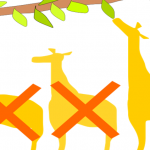This week, we read about PLOS’s Open Science Indicators initiative and the first dataset from the initiative. We hear about the partnership between PLOS and EarthArXiv and read ScienceOpen’s Year in Review. We also read the Open Access Journal Publishing 2022–2026 report and about the translation of Open Science Framework materials into non-English languages. Finally, we read the first Global Equity in Open Access Publishing workshop report and about the correlation between journal impact factor and peer review quality.
To read:
Made to measure: evaluating open science successes via The Scholarly Kitchen | 6-minute read
Adopting open science values has been shown to increase the trustworthiness and impact of scientific publications. But how do you actually measure the successes of open science? This article by Iain Hrynaszkiewicz (Director of Open Research Solutions at PLOS) discusses the development and testing of an open science measurement initiative called the Open Science Indicators initiative. Developed by PLOS in partnership with DataSeer, the Open Science Indicators initiative has recently released its first set of results, which you can read about here.
The first Open Science Indicators dataset via PLOS | 3-minute read
The first dataset from the Open Science Indicators initiative is also available to download for free at figshare. Focusing on three open science practices, namely data sharing, code sharing and preprint posting, the data showed encouraging, upward trends in the use of these open science practices by publishers between 2019 and 2022. PLOS now plans to expand this dataset with fresh data, as well as developing new indicators to measure other open science practices, such as peer review publishing, materials sharing and public protocols.
Friends of the EarthArXiv via PLOS | 1-minute read
EarthArXiv – a preprint server for earth, climate and planetary science – has entered into a preprint publishing partnership with PLOS. The partnership aims to open up fresh opportunities for authors who submit their research to PLOS Climate, PLOS Sustainability and Transformation and PLOS Water to also easily post preprints on EarthArXiv. From January 2023, authors will be given the option to automatically post their manuscript on EarthArXiv, directly from the journal submission portals.
A review of joint ScienceOpen and PLOS open science successes in 2022 via ScienceOpen | 6-minute read
Counting down to 2023, ScienceOpen is looking back at the open science successes of 2022 in their ‘Year in Review’. Here, they share the success story of their burgeoning partnership with PLOS after the publisher joined the ScienceOpen network with a new collection on Climate Change and Human Health. Submissions for this collection are open until 13 January 2023.
The Open Access Journal Publishing 2022–2026 report via STM Publishing News | 2-minute read
A new report on the changing dynamics of scholarly and professional publishing predicts that the recent White House Office of Science and Technology Policy mandate – also known as the ‘Nelson Memo’ – will promote strong open access publishing growth over the next 4 years. Conducted by media and publishing intelligence firm Simba Information, the Open Access Journal Publishing 2022–2026 report expects open access publishing to grow annually by at least 10% following the mandate’s implementation.
Expanding the Open Science Framework beyond the English language via Center for Open Science | 3-minute read
The Open Science Framework (OSF) has been an invaluable tool for helping researchers from around the world to practise openness and transparency in their research. To break down barriers to open science for researchers from non-English speaking countries, translation projects have been taking place to provide OSF materials in non-English languages. To date, this includes OSF materials in Spanish, Portuguese, Chinese, Turkish, German and Swahili, with more work being done to provide further resources in these languages – such as videos and podcasts – as well as expanding the number of languages.
Summary of the first Global Equity in Open Access Publishing workshop report via International Science Council | 2-minute read
Fee-based open access is on the rise, leading to concerns about affordability and equity for less well-funded researchers wishing to publish open access. To discuss these concerns, the International Science Council, OA2020, the Association of African Universities, cOAlition S, Electronic Information for Libraries, UNESCO and Science Europe have organized a series of three workshops on Global Equity in Open Access Publishing. The first of these, focusing on African and European researcher equity, took place on 21 and 22 November and the workshop report is now available to download for free here.
Journal impact factor is a poor predictor of peer review quality via The Publication Plan | 2-minute read
A recent study published as a preprint by Anna Severin and her team looked at whether there is a correlation between journal impact factor and the quality of peer review. Using artificial intelligence, the researchers found that peer reviewers for higher impact factor journals focused more on methodology and less on suggesting improvements and providing examples, compared with reviewers for lower impact factor journals. The peer review feedback at the higher impact journals also tended to be longer and the reviewer was more likely to be from Europe or North America. But, overall differences in peer review quality were found to be modest and highly variable, with the team concluding that impact factor is “a bad predictor for the quality of review”.
Have you watched our Open Pharma Symposium ‘Who can we trust? Open science and pharma research’? Watch it here on our YouTube channel!






